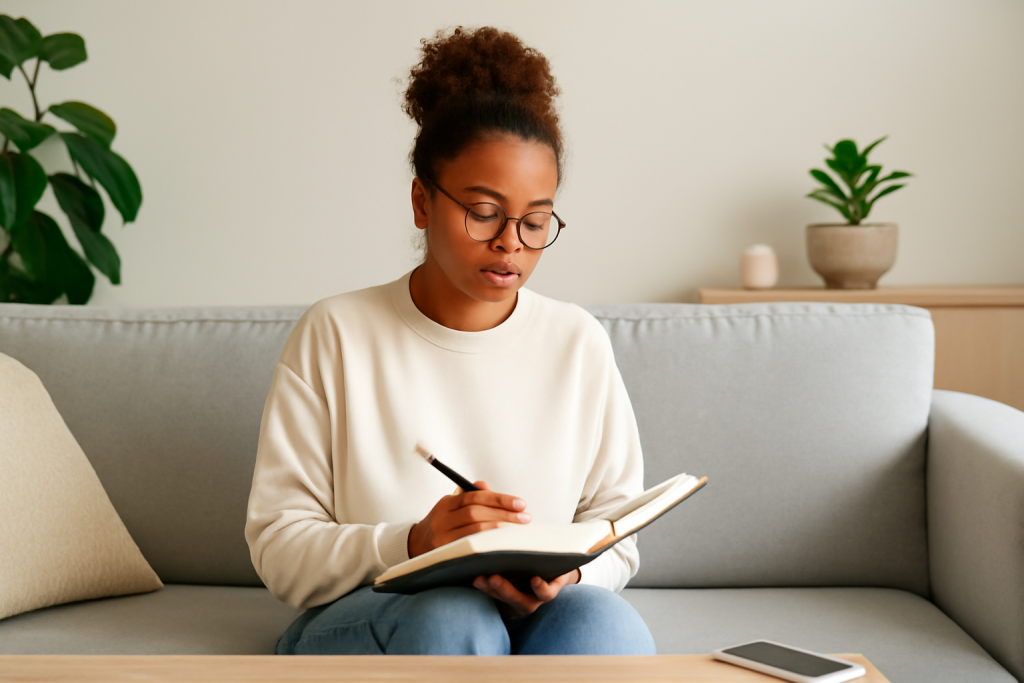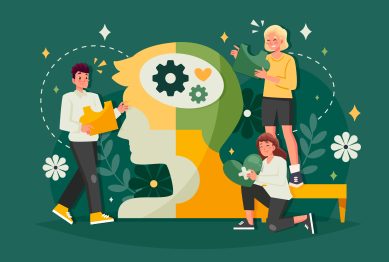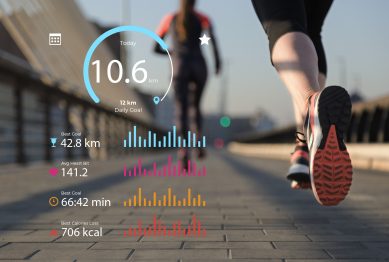Wellness has long been associated with productivity, often seen through the lens of “healthy mind, healthy body.” But over time, this has transformed into something far more complex. The hustle culture, which once dominated wellness trends, is now being reevaluated. Today, reflection is increasingly becoming the star of the wellness world, as people begin to realize that wellness isn’t just about achieving more; it’s about pausing, reflecting, and being kind to oneself. In 2024, this new trend is about embracing stillness, mindfulness, and emotional clarity rather than constant activity.
The rise of reflection over productivity marks a departure from the unrelenting pressure to do more. It focuses on the idea that wellness is not just about how much you accomplish but also about how well you understand and care for your body and mind. This shift challenges the long-held belief that worth is tied to constant action and achievement.

Why Is Reflection Gaining Popularity?
Reclaiming Our Time and Energy
We live in an age where the pressure to be productive is overwhelming. From work demands to personal goals, the relentless pursuit of more—more achievements, more productivity, more everything—often leaves us drained. This mindset is slowly being replaced by a focus on mindful living. As more people acknowledge the physical and mental exhaustion associated with being “constantly on,” there’s a significant shift towards reflecting, resting, and rejuvenating.
For example, the “Slow Living Movement” is gaining traction as people are learning to disconnect from the digital world, focus on quality over quantity, and prioritize meaningful activities over doing everything at once (Eriksen 2023).
The Mind-Body Connection: Reflection as Healing
More than just a temporary break from the grind, reflection fosters a deeper connection with our mind and body. Studies have shown that reflecting on our thoughts and emotions can reduce stress, lower anxiety, and increase overall mental health (Schmidt 2022). By stepping back and practicing mindfulness, individuals are able to process their feelings and experiences, which in turn, enhances their physical and emotional well-being.
What Reflection Looks Like in Practice
Meditation and Journaling
Among the most popular methods for reflection are meditation and journaling. These practices give individuals the space to reflect on their thoughts, emotions, and experiences. Studies show that daily journaling for just a few minutes can significantly reduce stress, improve mood, and increase self-awareness (Garrison et al., 2023).
Similarly, guided meditation apps have made it easier for anyone to access reflection exercises that calm the mind and help people reset their emotional state, even if just for a short period.
Digital Detox: Unplug to Reconnect
The digital world, while valuable for communication and productivity, can sometimes overwhelm us. The growing trend of digital detoxing—taking intentional breaks from screens—is an example of how wellness reflection is replacing productivity-driven goals. Taking a few hours, days, or weekends off from screens allows individuals to re-establish a deeper connection with themselves and the world around them, leading to greater clarity and calmness.
Embracing Reflection at Work
Even in professional settings, companies are starting to realize the value of allowing employees the time to reflect. While a focus on productivity used to dominate the workplace, many organizations are now offering wellness days, mental health breaks, and mindfulness training as part of their corporate wellness programs.
For instance, Google introduced mindfulness courses to its employees, which led to improved focus, reduced stress, and greater overall satisfaction in their roles (Smith 2023). This shift shows that it’s not about doing more but about doing what’s necessary and aligning your work-life balance with personal well-being.
The Impact on Mental Health
The impact of the “hustle culture” on mental health has never been more clear. Burnout, anxiety, and depression are widespread, and a lot of these issues stem from constant pressure to be productive. Reflective practices, such as deep breathing exercises, guided relaxation, and even taking a moment to pause and assess one’s mental health, can have a profound impact on reducing these symptoms and improving quality of life (Barrett 2024).
Practical Steps to Incorporate Reflection into Your Wellness Routine
If you’re ready to incorporate reflection into your wellness journey, here are some simple steps:
- Start a Daily Journal
Write down your thoughts, feelings, and reflections for just 10 minutes every day. No rules, just write what comes to mind. This helps with mental clarity and emotional release. - Take Time for Daily Reflection
Set aside 5-10 minutes each day to sit quietly and reflect. You can meditate or simply check in with yourself to gauge how you’re feeling, physically and mentally. - Unplug Regularly
Designate screen-free time to recharge. This could be a weekend or even just a few hours each day where you disconnect from work, social media, and digital distractions. - Practice Gratitude
Reflect on the positive aspects of your life by practicing gratitude. Whether you write them down or think them through, acknowledging what you’re thankful for can boost your mood and improve overall mental health. - Take Wellness Days
Listen to your body and take days off when needed. These are not “sick days” but rather days dedicated to your overall well-being.
Conclusion: Wellness Beyond the Grind
In 2024, wellness is no longer about striving for constant productivity. It’s about achieving balance through mindfulness, reflection, and taking the time to understand your needs. As the shift towards reflection over productivity continues, more people are embracing a healthier, more sustainable approach to wellness that focuses on mental clarity and emotional health as much as physical fitness.
Reflection over productivity isn’t just a trend—it’s a movement towards a healthier, more balanced way of living. Take the time to pause, reflect, and rejuvenate. Your body and mind will thank you for it.
References:
- Eriksen, M. (2023) The Slow Living Movement and Its Impact on Mental Health. Journal of Wellness Trends, 45(2), pp. 60-68. Available at: https://www.journalwellnesstrends.com (Accessed: 1 August 2025).
- Garrison, A., Thompson, J., and Collins, L. (2023) The Therapeutic Effects of Journaling: A Meta-Analysis. Psychological Wellness Studies, 29(3), pp. 124-139. Available at: https://www.psychologicalwellnessstudies.com (Accessed: 1 August 2025).
- Schmidt, D. (2022) Reflection Practices for Mental Well-being: A Guide to Mindfulness and Healing. Mindfulness Press. Available at: https://www.mindfulnesspress.com (Accessed: 1 August 2025).









